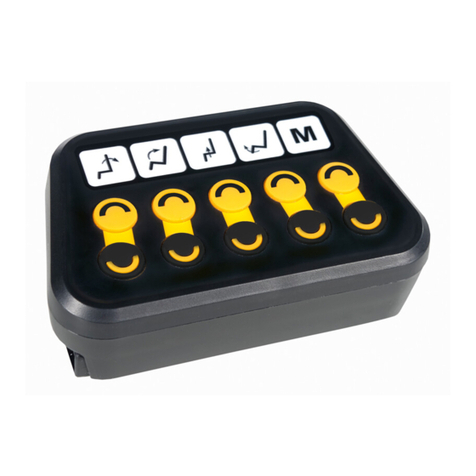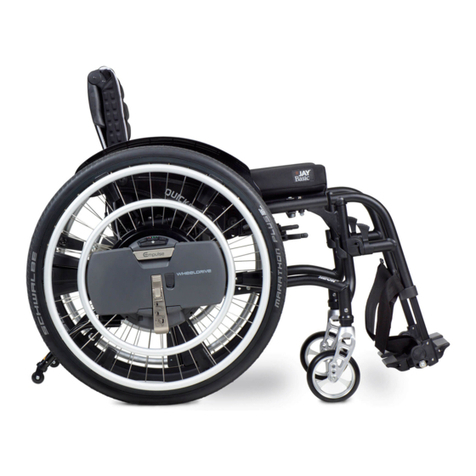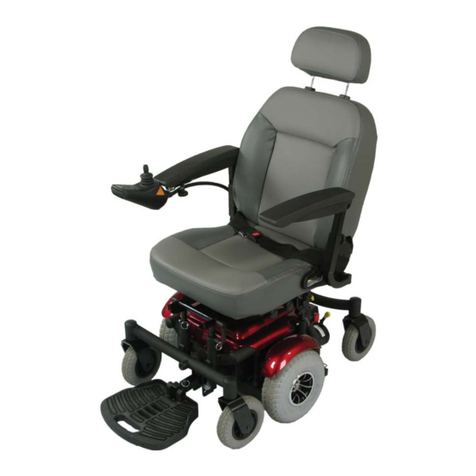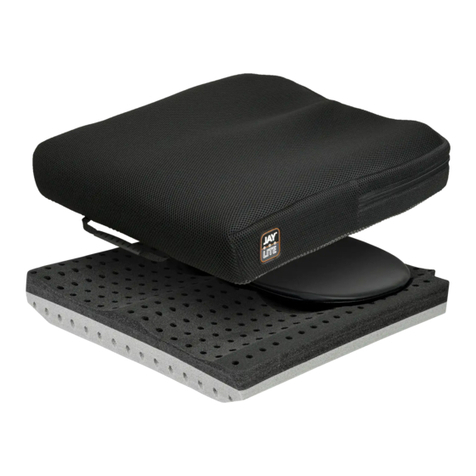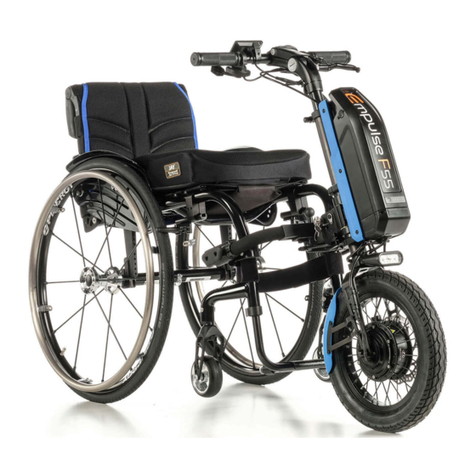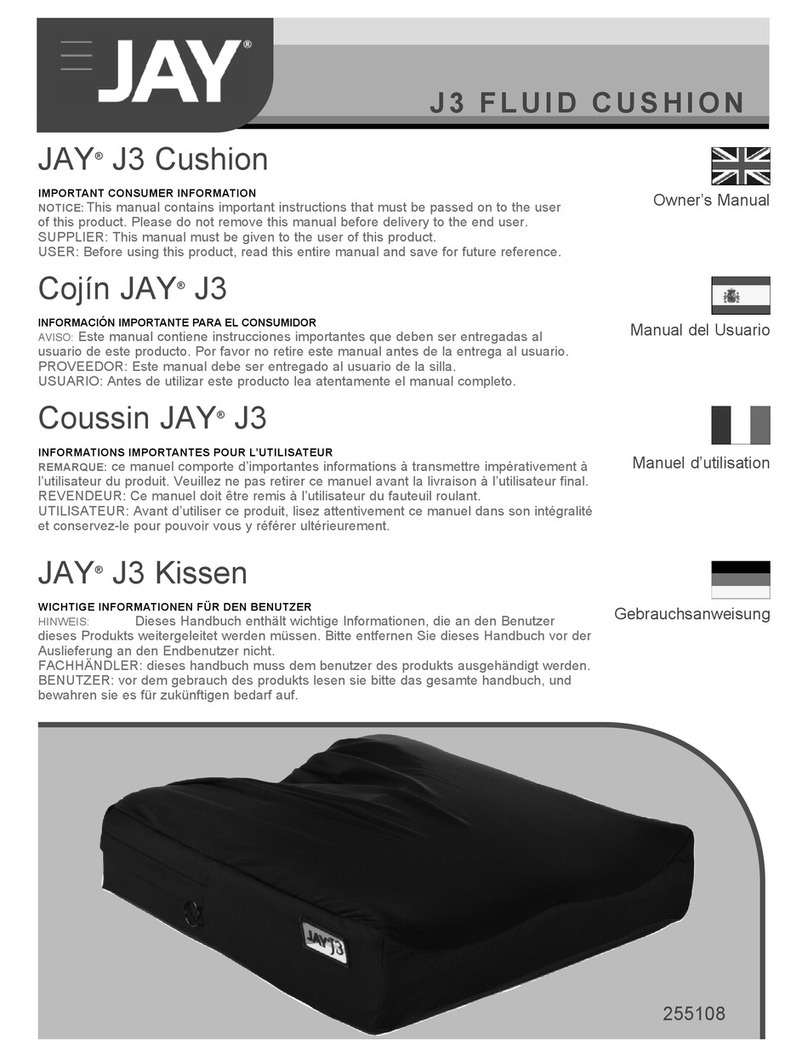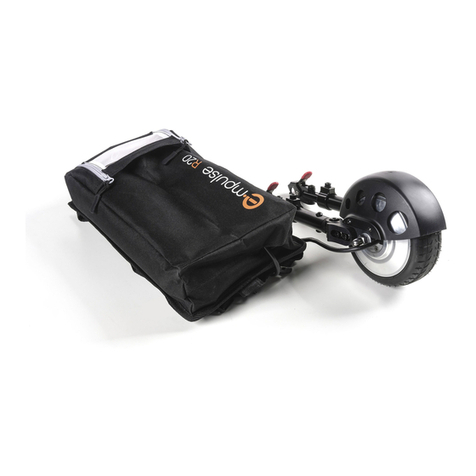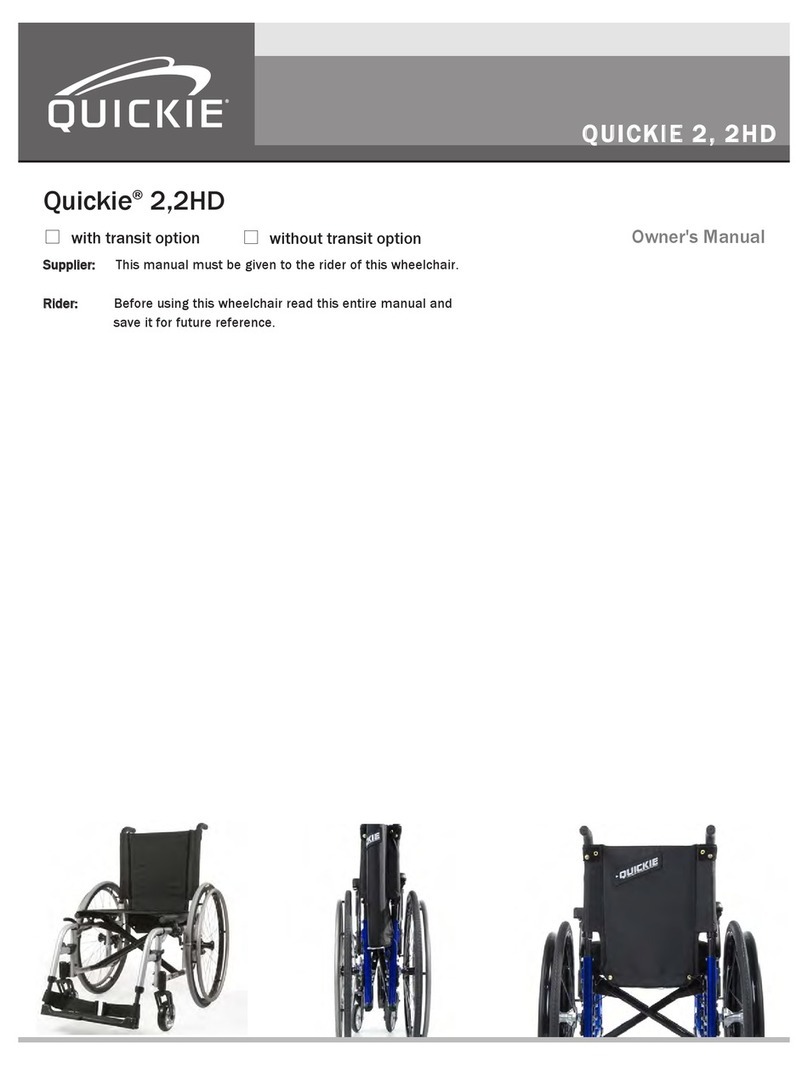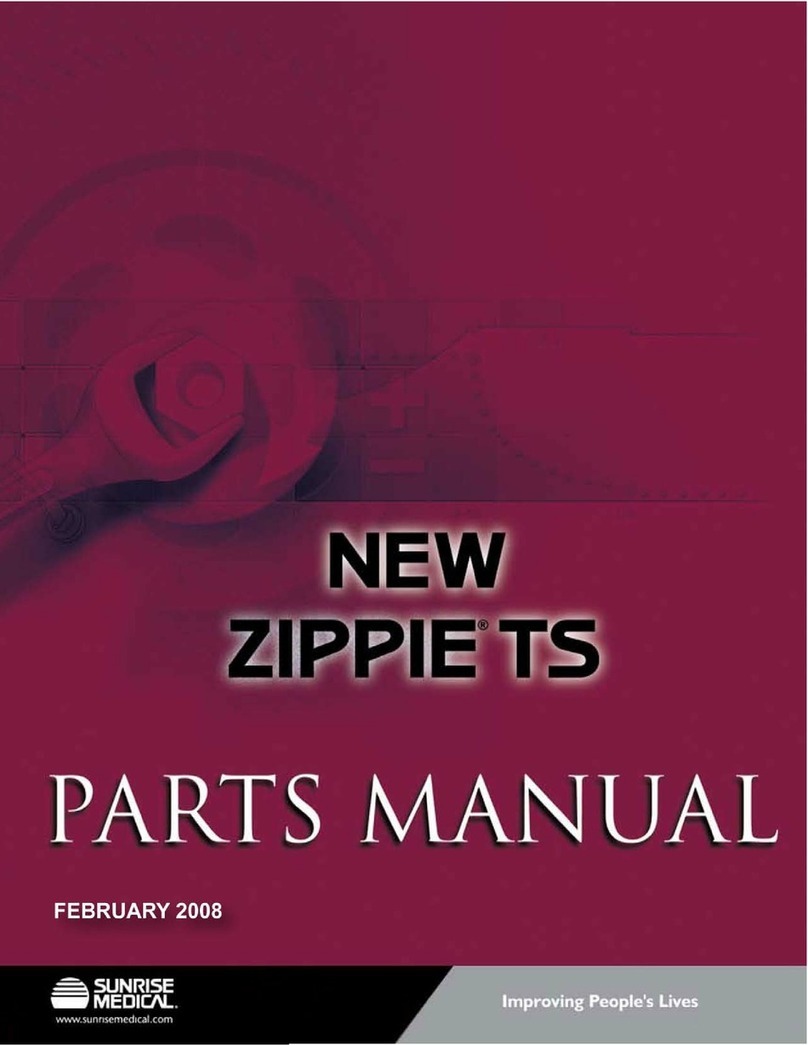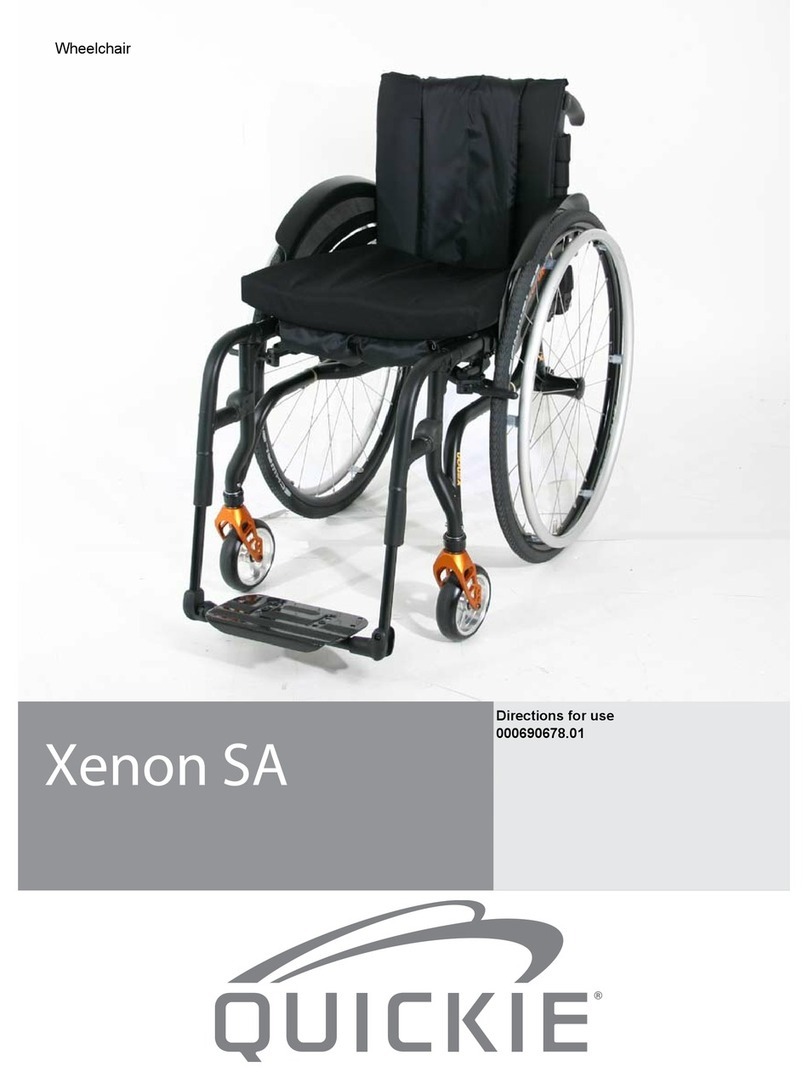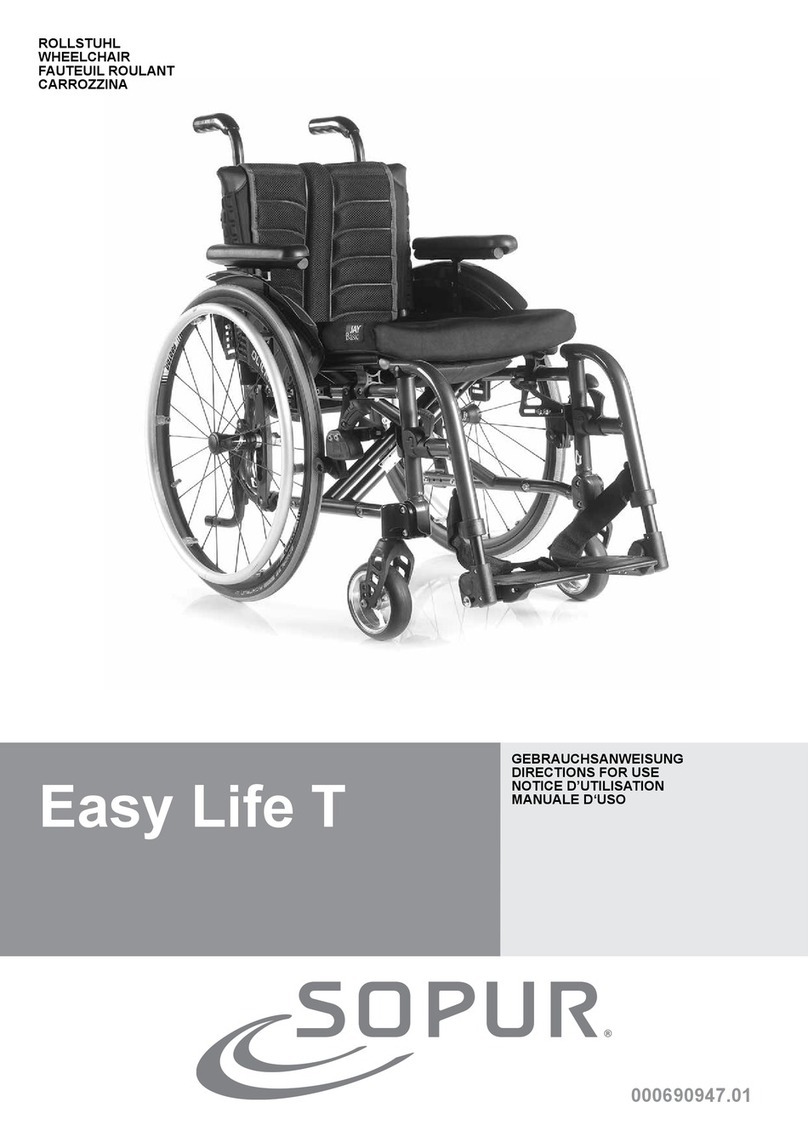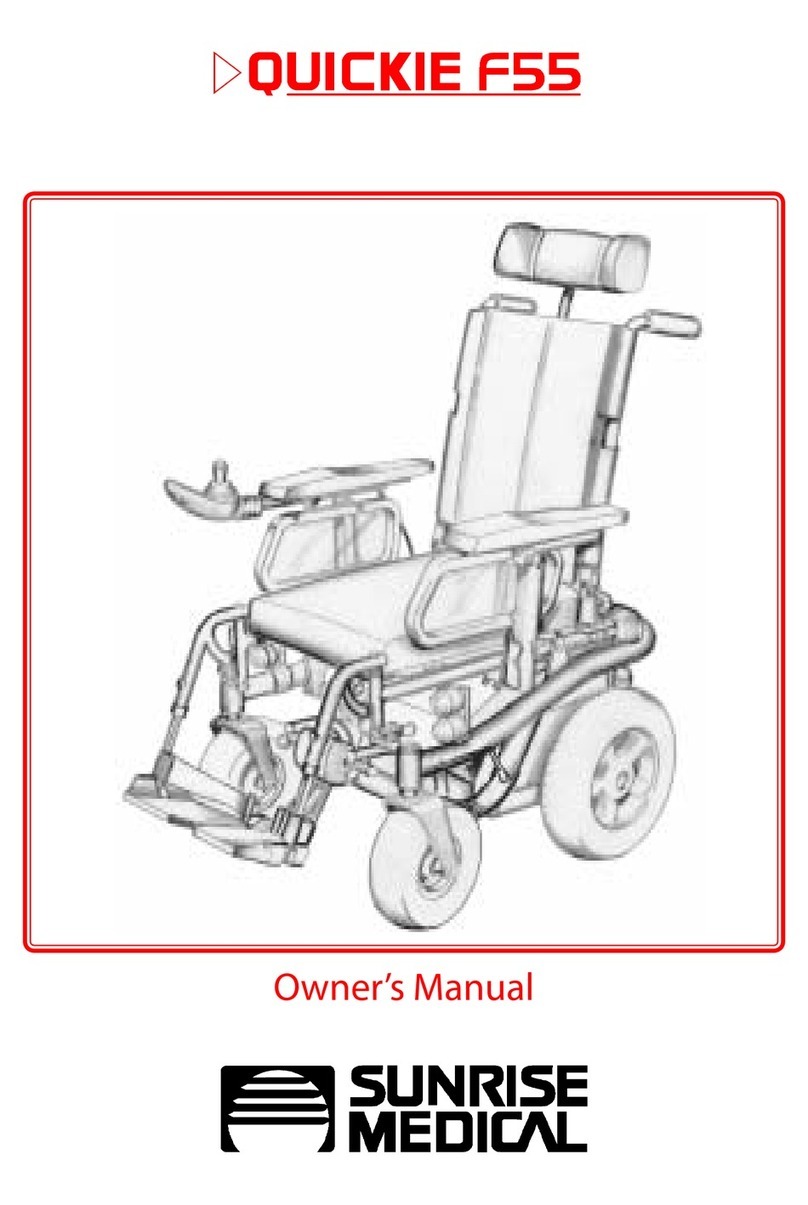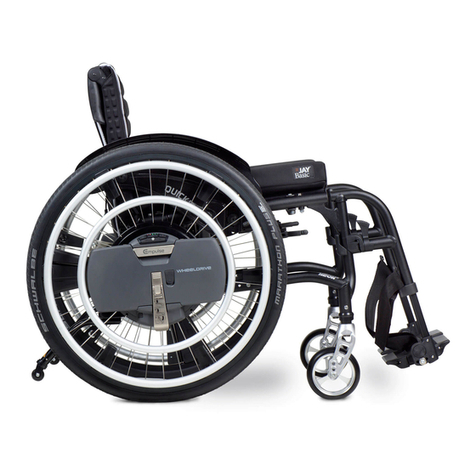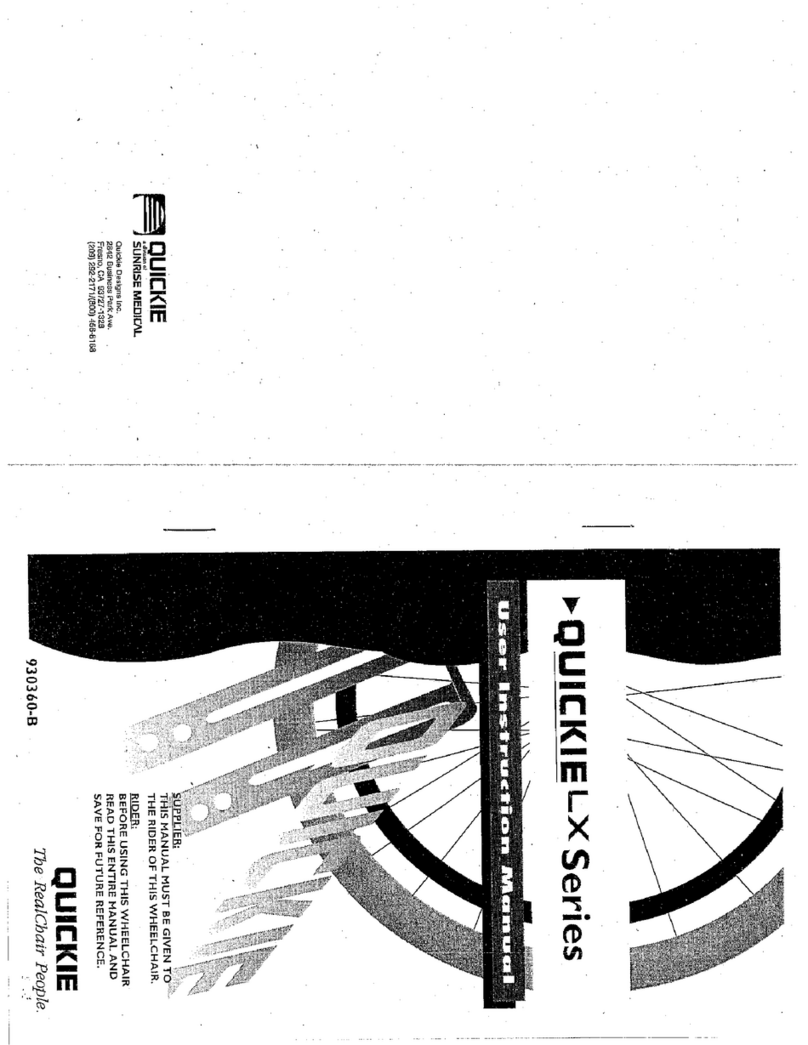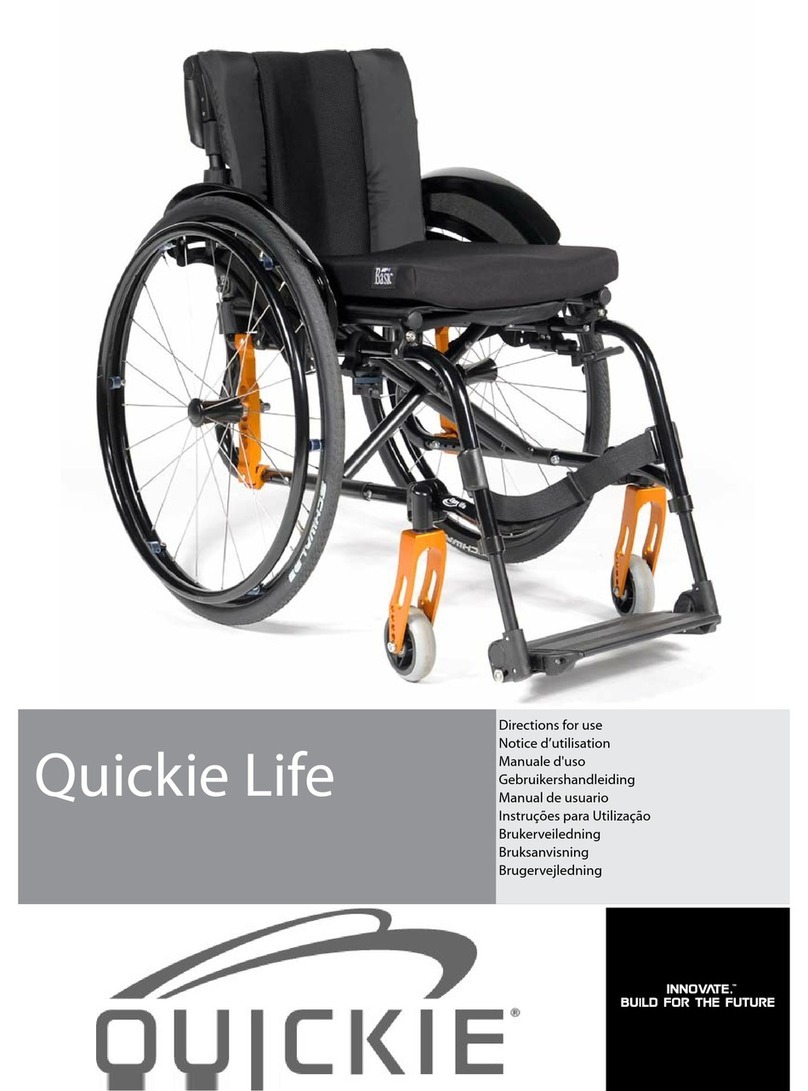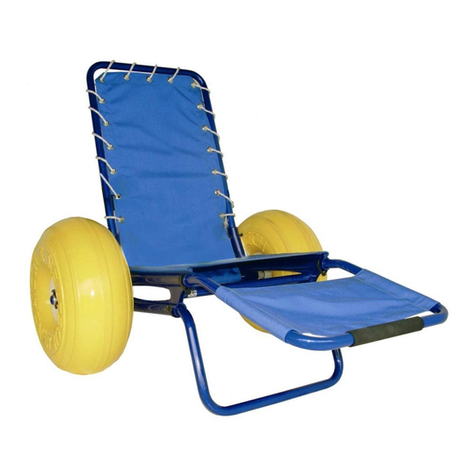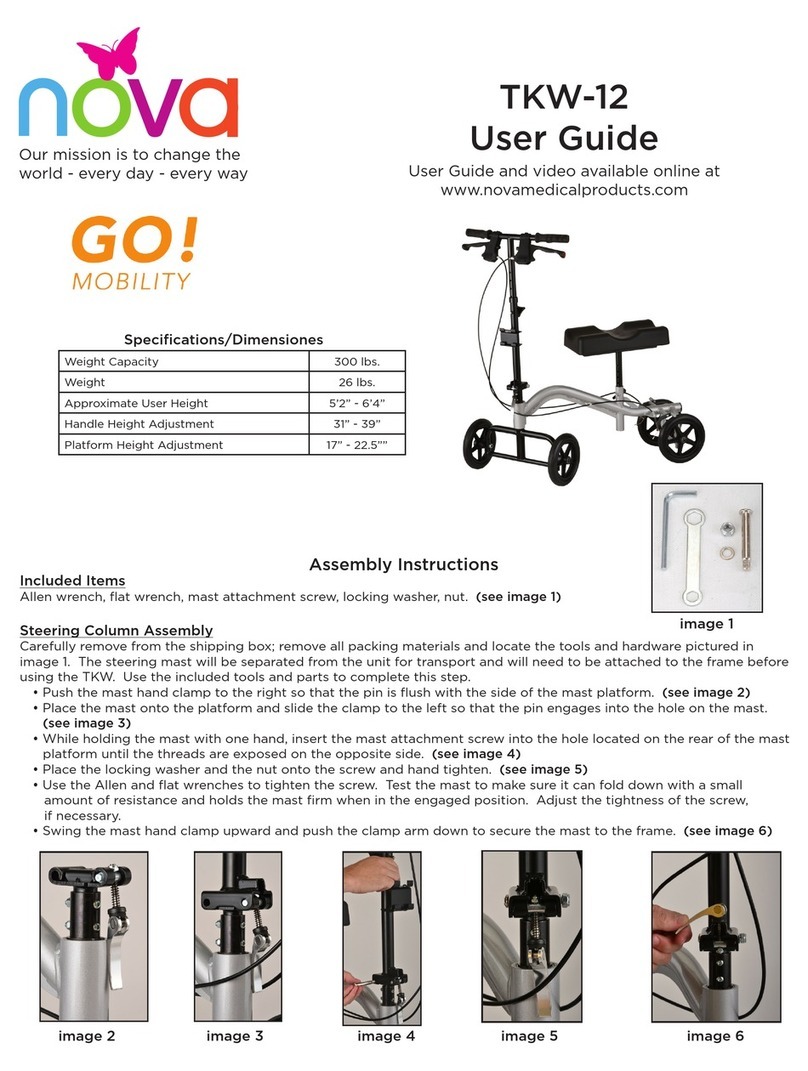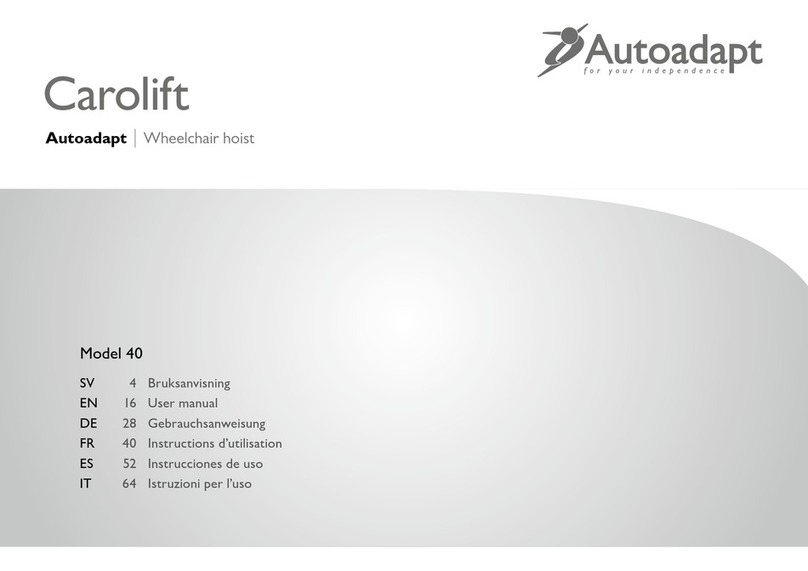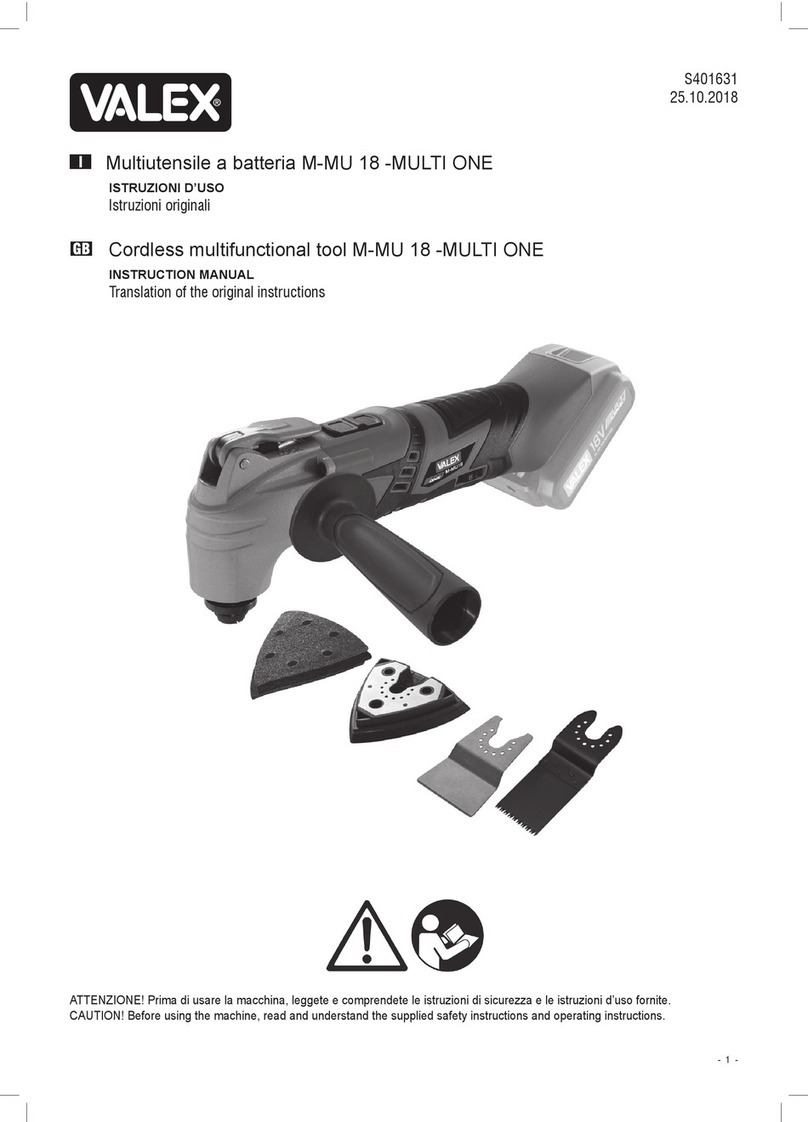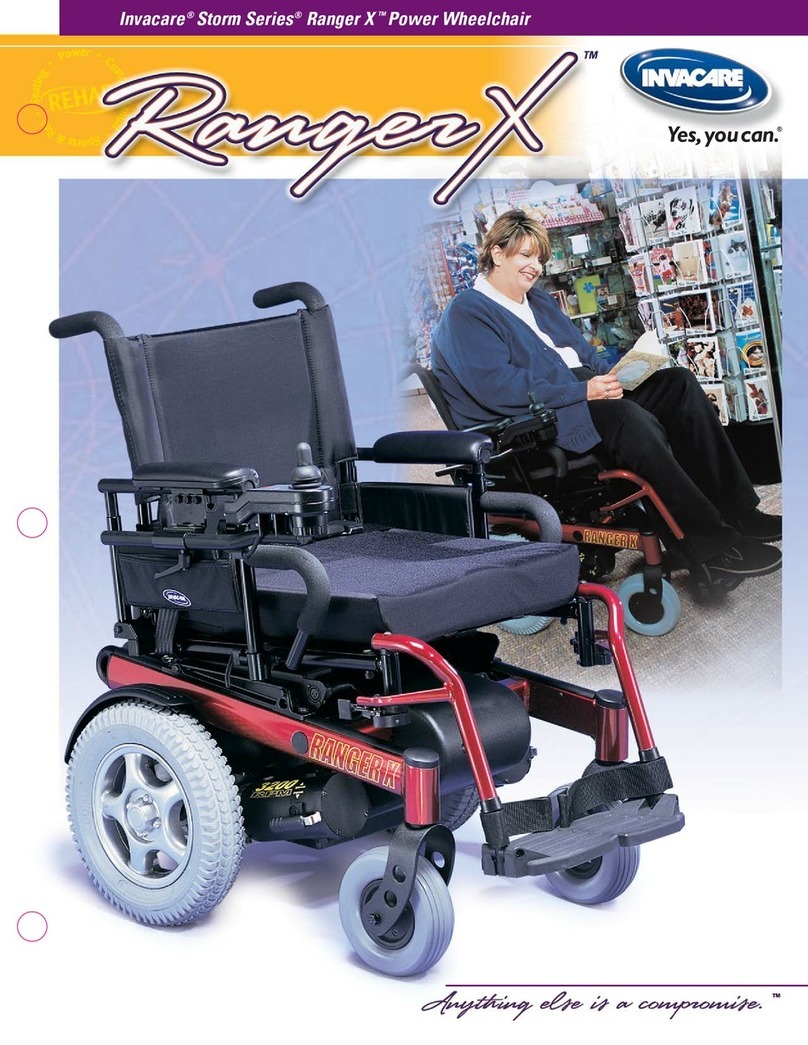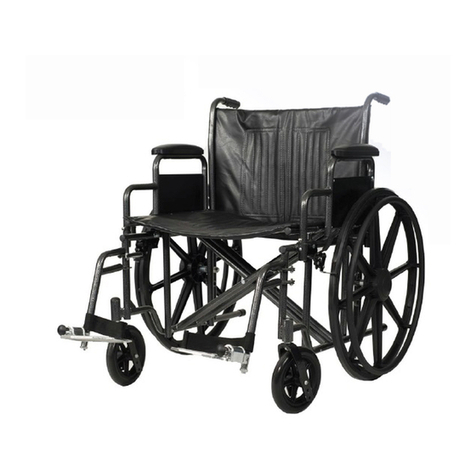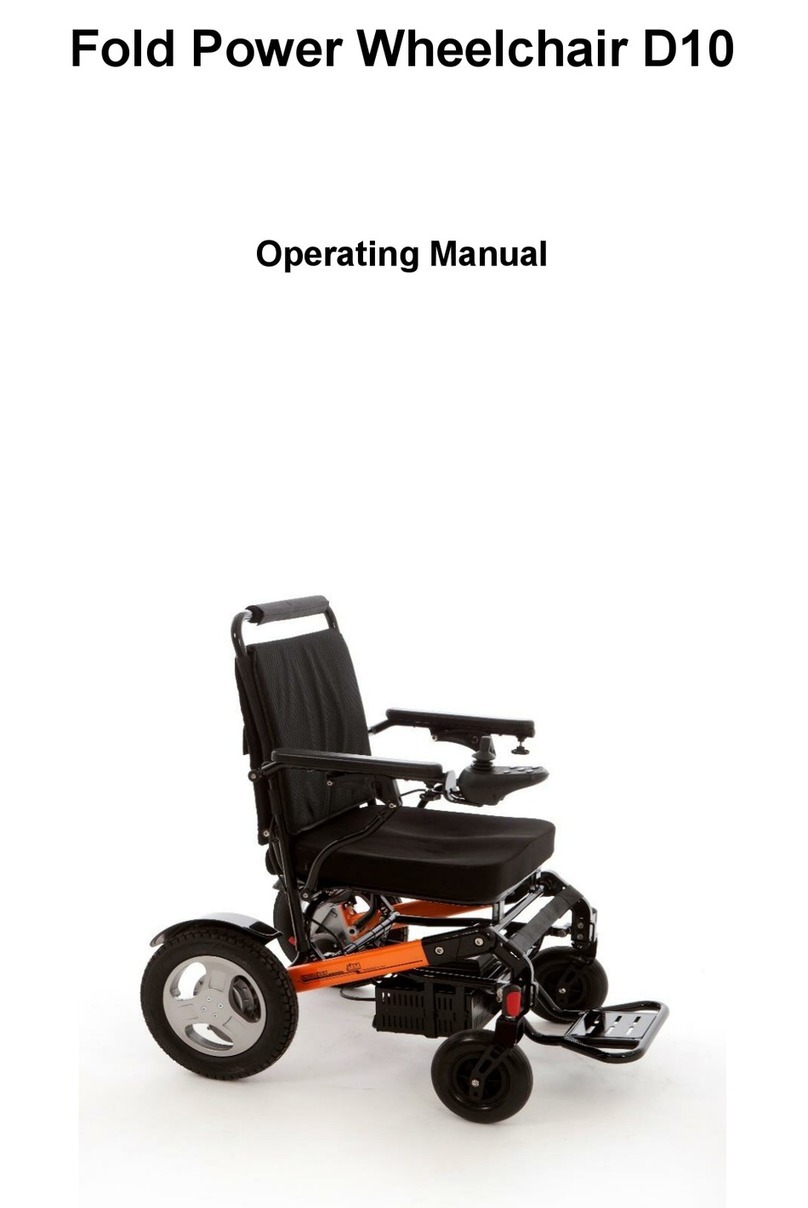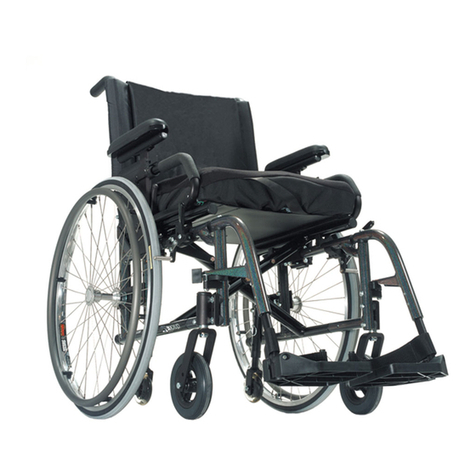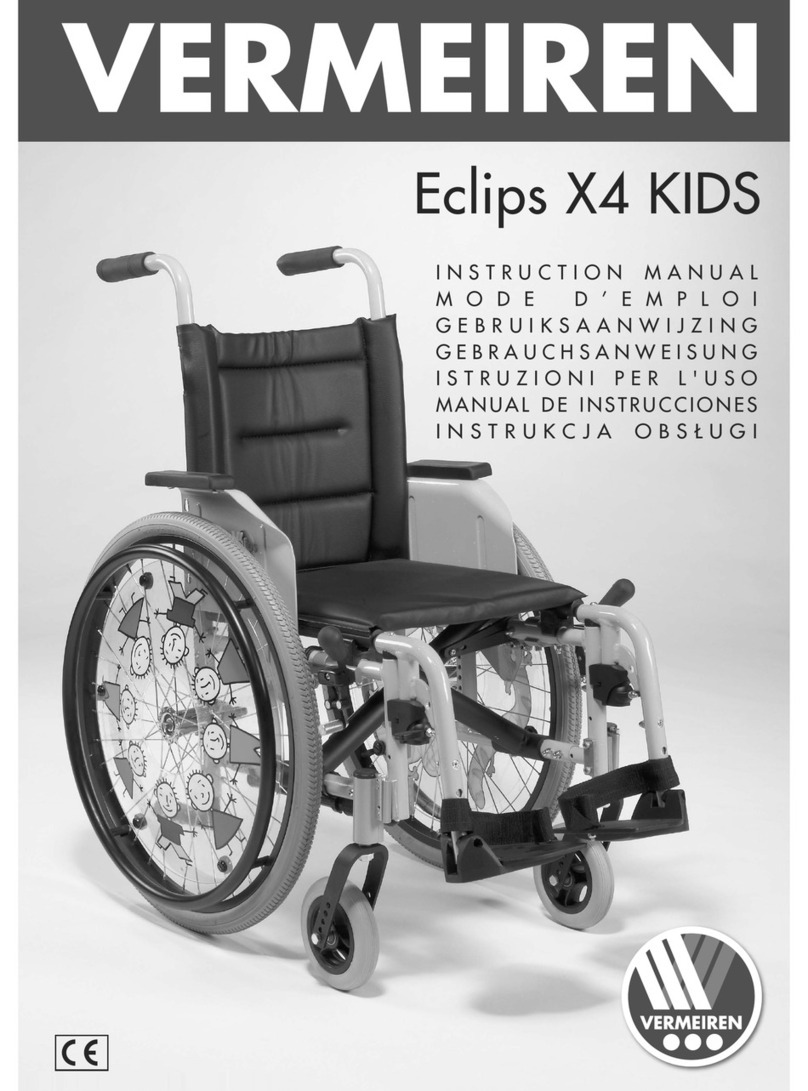930457 Rev. A
II. Table of Contents 5
IX. CHAIR BASICS ...................................................................................... 25
A.To Mount & Remove Rear Wheels........................................................... 25
X. SET-UP AND ADJUSTMENTS .................................................................... 26
A. Wheels ............................................................................................ 26
B. Removable Height-Adjustable Armrests ................................................. 26
C. Swing-Away Hangers and Footrests (60º, 70º, 70ºV or 90º) ..................... 26
D. Fixed Front Footrests.......................................................................... 27
E. Bac rest........................................................................................... 27
F. Seat Sling......................................................................................... 28
G. Cushion............................................................................................ 28
H. Rear Axles ........................................................................................ 28
I. Wheel Loc s...................................................................................... 30
J. Anti-Tip Tubes (Optional) ................................................................... 30
K. Folding and Unfolding........................................................................ 32
L. Chec -Out......................................................................................... 33
XI. TROUBLESHOOTING ............................................................................... 34
XII. MAINTENANCE ..................................................................................... 35
A. Introduction ..................................................................................... 35
B. Maintenance Chart ............................................................................ 35
C. Maintenance Tips............................................................................... 36
D. Cleaning........................................................................................... 36
E. Storage Tips...................................................................................... 36
XIII. SUNRISE LIMITED WARRANTY ............................................................... 37
A. For Lifetime ..................................................................................... 37
B. For 2 Years ...................................................................................... 37
C. Limitations ...................................................................................... 37
D. What We Will Do................................................................................ 37
E. What You Must Do ............................................................................ 37
F. Notice to Consumer............................................................................ 37
II. Table of Contents
930457 Rev. A
4
I. INTRODUCTION .................................................................................... 3
II. TABLE OF CONTENTS.............................................................................. 4
III. YOUR CHAIR AND ITS PARTS .................................................................. 6
IV. NOTICE - READ BEFORE USE ................................................................... 7
A. Choose the Right Chair & Safety Options .............................................. 7
B. Review This Manual Often .................................................................. 7
C. Warnings ......................................................................................... 7
V. GENERAL WARNINGS............................................................................. 8
A. Weight Limit .................................................................................... 8
B. Weight Training ................................................................................ 8
C. Getting to Know Your Chair ................................................................ 8
D. To Reduce The Ris of an Accident ...................................................... 8
E. Safety Chec list ................................................................................ 9
F. Changes & Adjustments ..................................................................... 9
G. Environmental Conditions .................................................................. 9
H. Terrain ............................................................................................ 10
I. Street Use ....................................................................................... 10
J. Motor Vehicle Safety ......................................................................... 10
K. When You Need Help ......................................................................... 11
VI. WARNINGS: FALLS & TIP-OVERS ............................................................. 12
A. Center of Balance ............................................................................. 12
B. Dressing or Changing Clothes ............................................................. 12
C. Obstacles ........................................................................................ 13
D. Reaching or Leaning ......................................................................... 14
E. Moving Bac ward .............................................................................. 15
F. Ramps, Slopes & Sidehills .................................................................. 15
G. Transfer............................................................................................ 16
H. Curbs & Steps ................................................................................... 17
I. Stairs .............................................................................................. 17
J. Escalators ........................................................................................ 17
VII. WARNINGS: FOR SAFE USE ..................................................................... 18
A. Descending a Curb or Single Step ........................................................ 18
B. Climbing a Curb or Single Step ........................................................... 18
C. Climbing Stairs ................................................................................. 19
D. Descending Stairs .............................................................................. 19
E. Maintenance .................................................................................... 19
VIII. WARNINGS: COMPONENTS & OPTIONS ..................................................... 20
A. Anti-Tip Tubes (Optional) ................................................................... 20
B. Armrests ......................................................................................... 20
C. Cushions & Sling Seats ...................................................................... 20
D. Fasteners ........................................................................................ 21
E. Footrests.......................................................................................... 21
F. Pneumatic Tires ................................................................................ 21
G. Power Drive ..................................................................................... 22
H. Push Handles .................................................................................... 22
I. Quic -Release Axles .......................................................................... 22
J. Rear Wheels ..................................................................................... 23
K. Rear Wheel Loc s .............................................................................. 23
L. Modified Seat Systems ....................................................................... 23
M. Upholstery Fabric ............................................................................. 24
